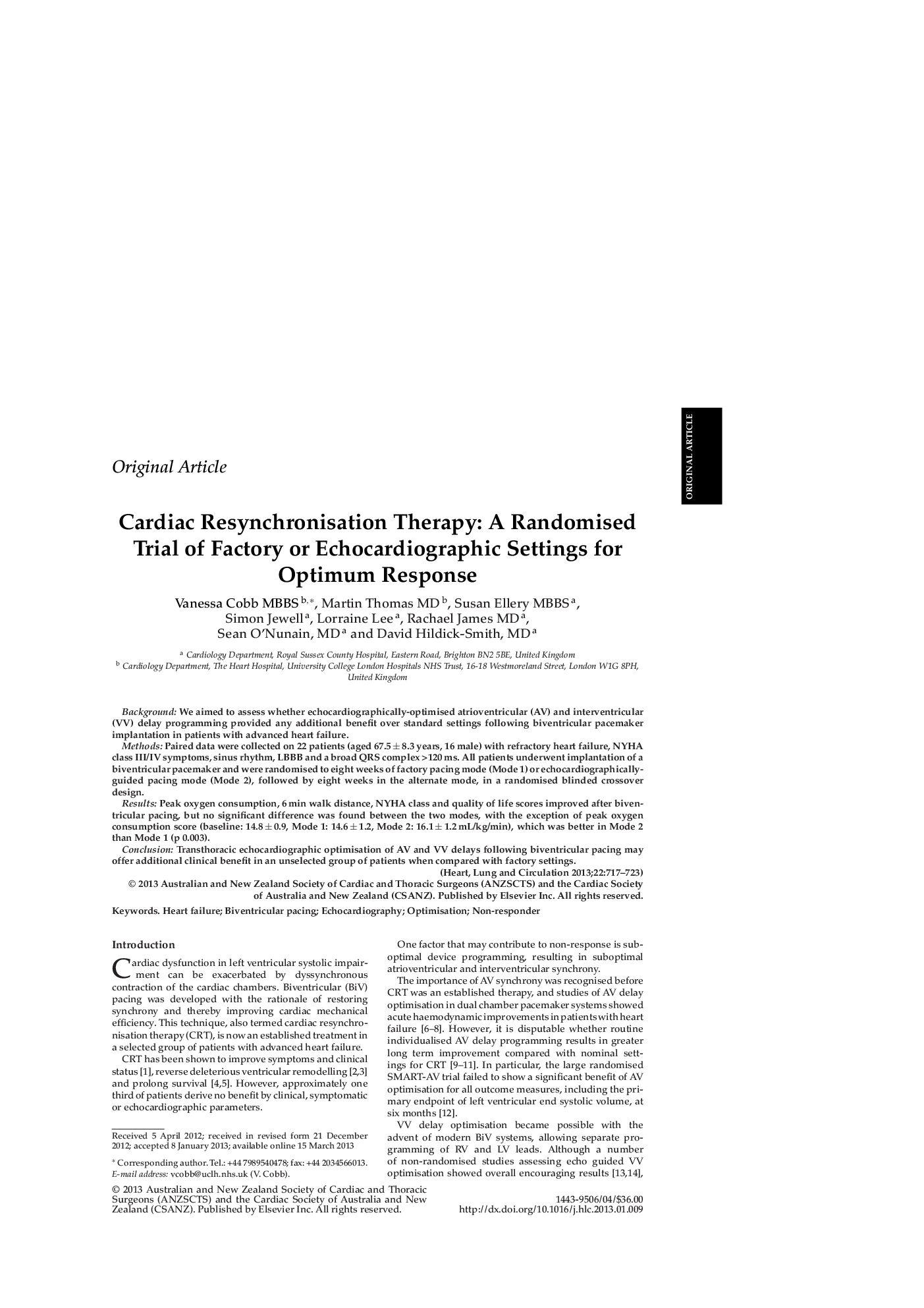| Article ID | Journal | Published Year | Pages | File Type |
|---|---|---|---|---|
| 2917941 | Heart, Lung and Circulation | 2013 | 7 Pages |
BackgroundWe aimed to assess whether echocardiographically-optimised atrioventricular (AV) and interventricular (VV) delay programming provided any additional benefit over standard settings following biventricular pacemaker implantation in patients with advanced heart failure.MethodsPaired data were collected on 22 patients (aged 67.5 ± 8.3 years, 16 male) with refractory heart failure, NYHA class III/IV symptoms, sinus rhythm, LBBB and a broad QRS complex >120 ms. All patients underwent implantation of a biventricular pacemaker and were randomised to eight weeks of factory pacing mode (Mode 1) or echocardiographically-guided pacing mode (Mode 2), followed by eight weeks in the alternate mode, in a randomised blinded crossover design.ResultsPeak oxygen consumption, 6 min walk distance, NYHA class and quality of life scores improved after biventricular pacing, but no significant difference was found between the two modes, with the exception of peak oxygen consumption score (baseline: 14.8 ± 0.9, Mode 1: 14.6 ± 1.2, Mode 2: 16.1 ± 1.2 mL/kg/min), which was better in Mode 2 than Mode 1 (p 0.003).ConclusionTransthoracic echocardiographic optimisation of AV and VV delays following biventricular pacing may offer additional clinical benefit in an unselected group of patients when compared with factory settings.
